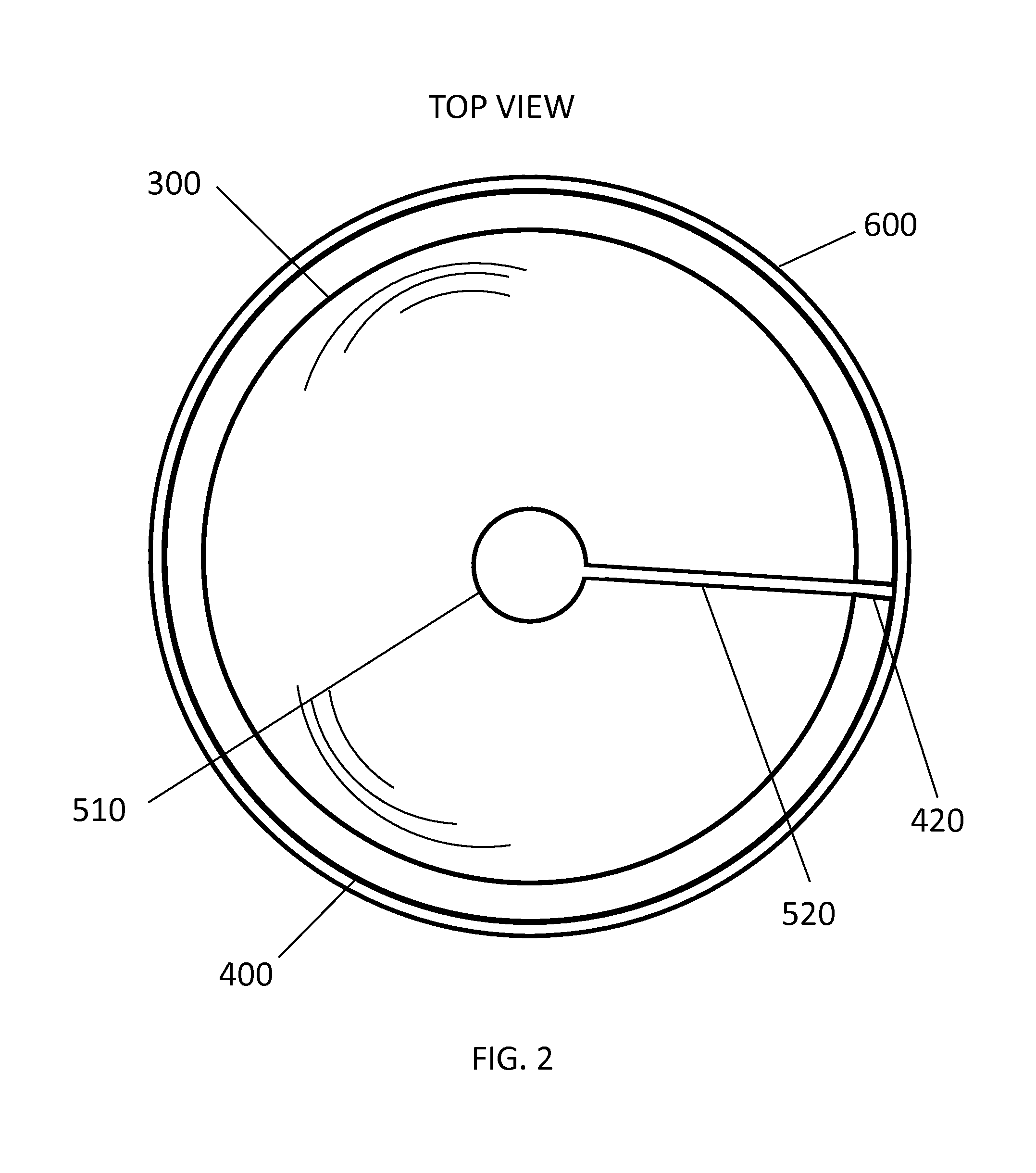Transparent Silicone Cover for the Safeguarding of Glass Pharmaceutical Vials
a technology transparent silicone, which is applied in the direction of packaging foodstuffs, sustainable manufacturing/processing, packaged goods, etc., can solve the problems of glass being fragile and easily broken, presenting a set of issues that do require attention, and posing a threat to the safety of medical and veterinary staff and their patients, so as to reduce the subsequent risk of pathogen infiltration, prevent the partial cracking of glass pharmaceutical vials, and improve safety
- Summary
- Abstract
- Description
- Claims
- Application Information
AI Technical Summary
Benefits of technology
Problems solved by technology
Method used
Image
Examples
Embodiment Construction
[0033]In the preferred embodiment, my invention is a transparent silicone cover that will be comprised of a main piece, defined by a hollow cylinder with a wide lumen and a base with a narrow lumen. The main cylindrical piece will have a slit on one side from top to bottom and extending across the base to the outer circumferential edge of the narrow lumen in the base, so as to allow for opening of the cover and ease the insertion / removal of a glass pharmaceutical vial. It will be provided with transparent silicone bands that will fit over the cover to further secure the cover tightly around the glass pharmaceutical vial and further safeguard the glass pharmaceutical vial contained within the cylindrical void formed by the closed cover and integral base.
[0034]In use, the slit provides for flexion of the transparent silicone cylindrical covering to easily accommodate insertion of a glass pharmaceutical vial. Once flexed to an open position, the glass pharmaceutical vial is placed with...
PUM
 Login to View More
Login to View More Abstract
Description
Claims
Application Information
 Login to View More
Login to View More - R&D
- Intellectual Property
- Life Sciences
- Materials
- Tech Scout
- Unparalleled Data Quality
- Higher Quality Content
- 60% Fewer Hallucinations
Browse by: Latest US Patents, China's latest patents, Technical Efficacy Thesaurus, Application Domain, Technology Topic, Popular Technical Reports.
© 2025 PatSnap. All rights reserved.Legal|Privacy policy|Modern Slavery Act Transparency Statement|Sitemap|About US| Contact US: help@patsnap.com



